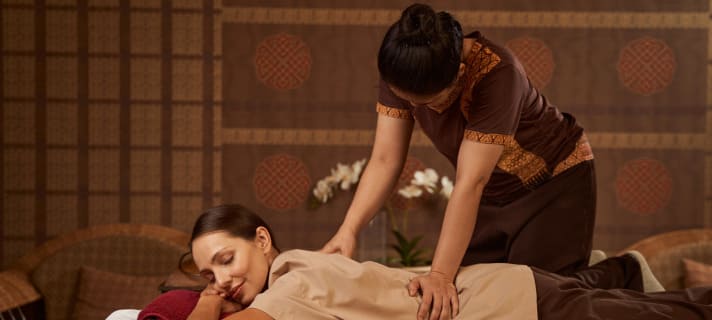In the bustling streets of Bangkok, amidst the aromatic stalls of street food vendors and the vibrant colors of bustling markets, one can find a hidden treasure that goes beyond the tourist attractions and shopping sprees. It’s the art of Thai massage – a therapeutic practice that marries tradition and technique in a harmonious blend that has been passed down through generations.
A Journey into Tradition
Authentic Thai massage, known as “Nuad Thai” in the native language, has deep roots in Thai culture and traditions. Its history can be traced back over 2,500 years to the time of the Buddha. According to legend, this ancient healing art was developed by a physician named Shivago Komarpaj, who was a contemporary of the Buddha himself. Over time, it evolved and absorbed elements of traditional Chinese medicine and Ayurveda.
At the heart of Thai massage is the belief in the body’s energy lines, known as “Sen” lines. Practitioners of Thai massage believe that these energy lines are essential for maintaining physical and mental health. By applying pressure and stretching techniques along these Sen lines, practitioners aim to release blockages and restore the natural flow of energy within the body. This holistic approach to wellness distinguishes Thai massage from other forms of massage therapy.
Traditional Thai Healing
Thai massage is not just a physical practice; it is deeply intertwined with Thai culture and spirituality. Traditionally, it was practiced in temples and monasteries as a form of healing and meditation. Monks were the primary practitioners, and they passed down their knowledge to fellow monks and a select few laypeople.
The therapeutic benefits of Thai massage are numerous. It improves circulation, relieves muscle tension, enhances flexibility, and promotes relaxation. Beyond the physical benefits, it is believed to balance the body’s energy, reduce stress, and foster a sense of well-being. The emphasis on spirituality and mindfulness during a session elevates it from a mere massage to a profound healing experience.
Modern Applications
While Thai massage has deep traditional roots, it has also adapted to modern times. Today, it’s not uncommon to find Thai massage studios and training centers around the world. These centers blend ancient tradition with contemporary techniques, making this ancient art accessible to people of all backgrounds.
Authentic Thai massage training is a rigorous process. Aspiring practitioners often enroll in specialized schools and courses to learn the art from experienced teachers. These courses cover a wide range of topics, including anatomy, physiology, Sen lines, and various massage techniques.
Thai Massage Techniques
The hallmark of Thai massage is its unique blend of techniques that make it stand out from other massage therapies. During a typical Thai massage session, practitioners use their hands, thumbs, elbows, knees, and feet to apply pressure and manipulate the recipient’s body. The stretching and yoga-like poses performed during a session also contribute to its distinctiveness.
One of the most well-known techniques in Thai massage is “palming” and “thumbing,” where the practitioner uses their palms and thumbs to apply rhythmic pressure along the Sen lines. This technique is both relaxing and invigorating, promoting improved energy flow.
The stretching component of Thai massage is equally important. Recipients are gently guided into various yoga-like positions, which help improve flexibility and relieve tension. This aspect of Thai massage sets it apart as a holistic practice that benefits both the body and mind.
Certification and Practitioners
After completing a comprehensive training program, aspiring Thai massage practitioners often seek certification from recognized institutions. Certification not only validates their skills but also ensures that they adhere to the ethical and professional standards of the practice.
Certified Thai massage practitioners can work in a variety of settings, including spas, wellness centers, and private practices. Some choose to specialize in specific aspects of Thai massage, such as therapeutic or prenatal massage, further expanding the versatility of this ancient art.
The Benefits of Thai Massage
The benefits of authentic Thai massage extend beyond relaxation and pain relief. Regular sessions can lead to improved posture, increased energy levels, and enhanced mental clarity. Many people turn to Thai massage as a holistic approach to managing chronic pain conditions, stress-related ailments, and even emotional issues.
In the world of massage therapy, where various techniques and traditions converge, authentic Thai massage stands as a testament to the power of blending tradition with modern practice. It offers a unique and effective approach to healing that incorporates centuries-old wisdom with contemporary knowledge.
Whether you seek the profound spirituality of its origins or simply wish to experience its therapeutic benefits, Thai massage is a testament to the enduring power of tradition and technique in the pursuit of well-being. As this ancient art continues to evolve, it serves as a reminder that sometimes, the most effective solutions are found at the intersection of the old and the new.

